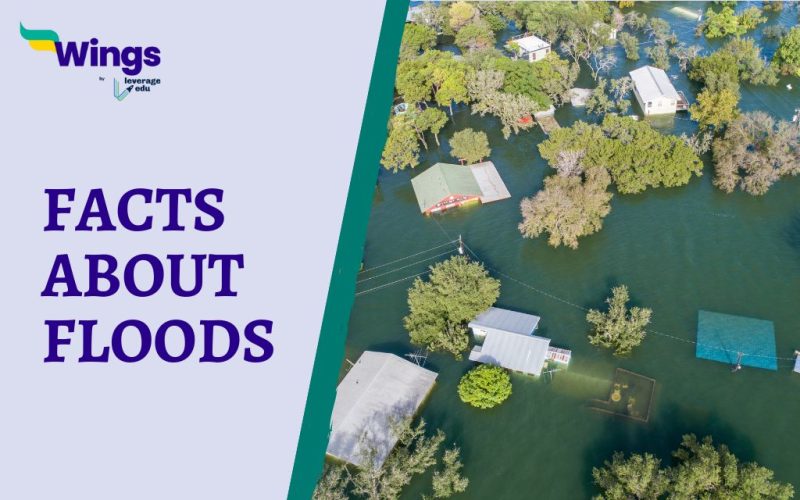Facts about Floods: Floods are natural disasters that have had an effect on human life for centuries. Although they can be devastating, they also maintain an ecological balance of floodplains by depositing rich nutrients that improve soil fertility and help agriculture. In the past couple of years, however, the frequency and severity of floods have increased due to climate change, which is causing more extreme weather events and rising sea levels. In India, these changes are a high risk to inland and coastal regions and the communities and ecosystems that are around that environment.
List of Facts about Floods
Table of Contents [show]
Furthermore, here are some Facts about Floods that you should know about!
- There have been floods that are large enough to be visible from space! These images have been captured by NASA and other space agencies as well. For example, the floods in China, India, Nepal, and Bangladesh in 2016 were monitored by NASA’s Earth Observatory.
- India’s flood areas are classified into four regions: the Brahmaputra River Region, the Ganga River Region, the Northwest River Region, and the Central and Deccan India Region. Moreover, each of these regions has different causes and characteristics for flooding!
- Interestingly, there are some species, like the mangrove rivulus that have adapted to survive in environments that are prone to flooding! Thus, this shows us that they have a very unique biological resilience.
- In the years 2018 and 2019, Kerala experienced devastating floods because of high rainfall and overflowing dams. In addition, the 2018 floods were especially harsh, with the state receiving 116% above-average rainfall!
- The Netherlands is famous for its advanced flood control systems, such as dikes, levees, and storm surge barriers. They are developed to manage water levels and protect the country from floods.
- There are major Indian cities like Mumbai and Chennai that face urban flooding due to inadequate drainage systems, unplanned urbanisation, and encroachment on water bodies!
- Interestingly, there are earthquakes and volcanic eruptions that can also cause floods. In 2010, the earthquake in Haiti began a landslide that blocked a river, therefore which led to flooding!
- Floods in places like the Kaziranga National Park in Assam usually lead to wildlife displacement. Animals such as rhinos and elephants are forced to move to higher ground!
- Floods have also been part of cultural myths, such as the biblical story of Noah’s Ark and the ancient Mesopotamian flood myth.
- Deforestation as well as improper use of land increases the risk of floods as they cause more runoff and overfill drainage systems.
- Interestingly, the ancient Egyptians made flood control measures like the Aswan Dam to control the Nile River’s flow, hence showing the early efforts to harness water.
- Dendrochronology or the study of tree rings also gives us the records of the floods that have happened!
- In 2023, the northern part of India had brutal monsoon floods. It affected states like Himachal Pradesh, Uttarakhand, and parts of Delhi. This resulted in a lot of damage and displacement.
- The Great Mississippi Flood of 1927 affected multiple states in the USA. Moreover, it also led to many changes in flood control policies!
- With the increase in dependence on technology, there are remote sensing, satellite imagery, and computer models. These have contributed to improved accuracy and preparedness.
FAQs
The biggest flood in the world happened in 1931 and is known as the Yellow River flood in China.
Bangladesh has the most floods. However, its geographic location, river systems, and cyclone vulnerability make it highly exposed to frequent flooding.
The Netherlands is famous for its advanced flood control systems.
Read more Interesting Facts!
I hope you liked reading these Facts About Floods. If you want to know more about topics like this, then visit our Interesting Facts and General Knowledge page!
 One app for all your study abroad needs
One app for all your study abroad needs















 45,000+ students trusted us with their dreams. Take the first step today!
45,000+ students trusted us with their dreams. Take the first step today!
